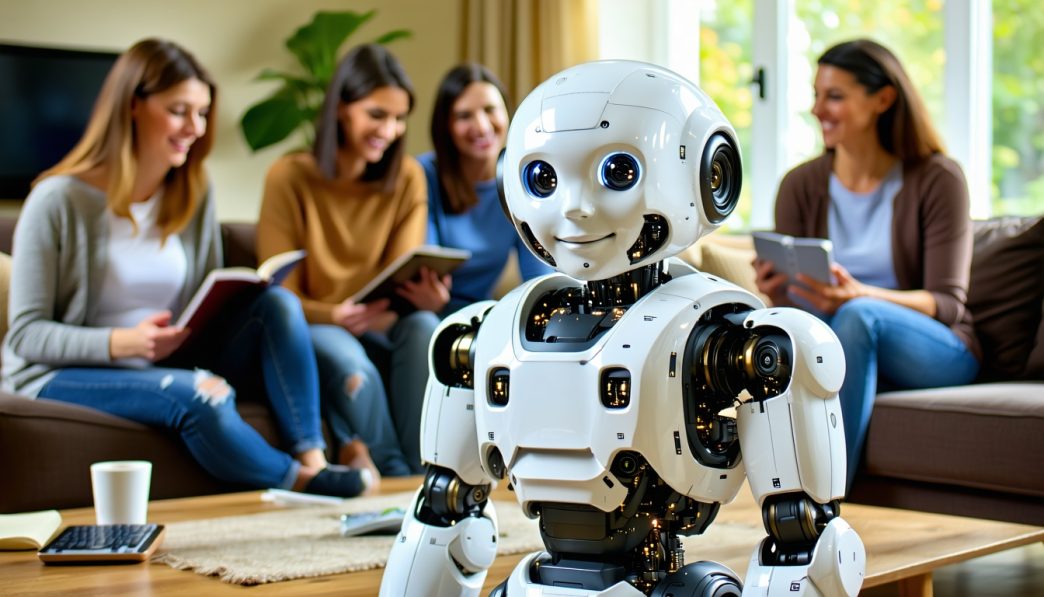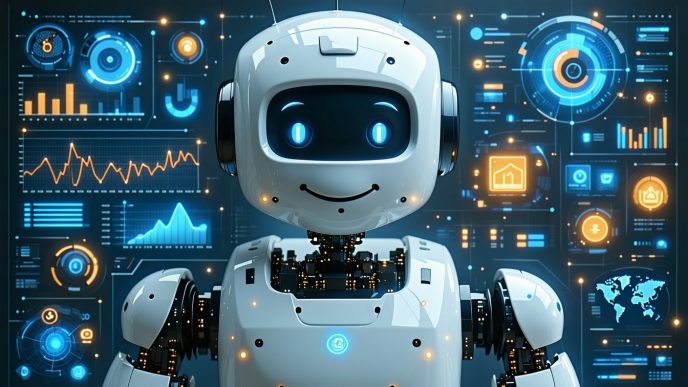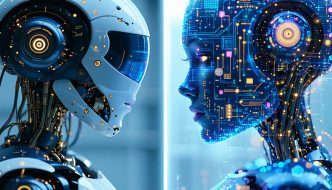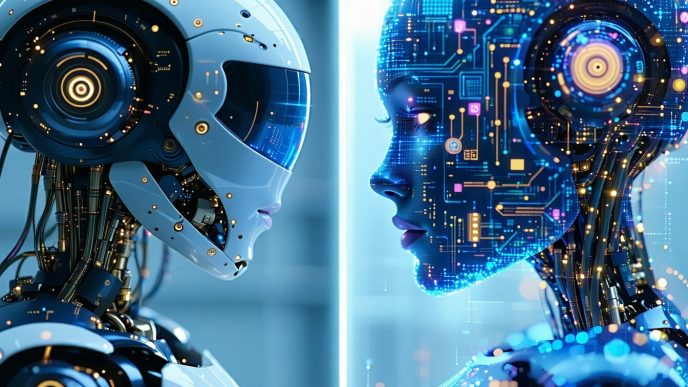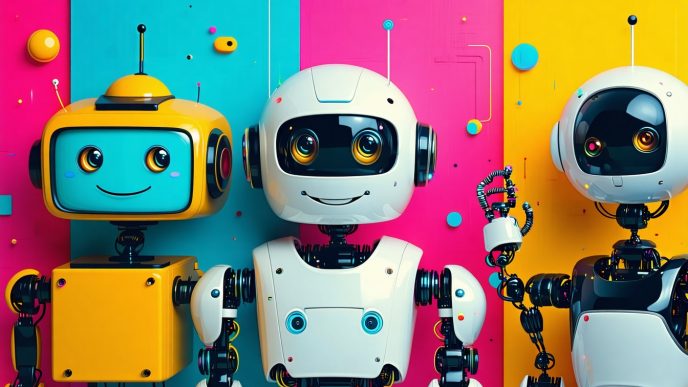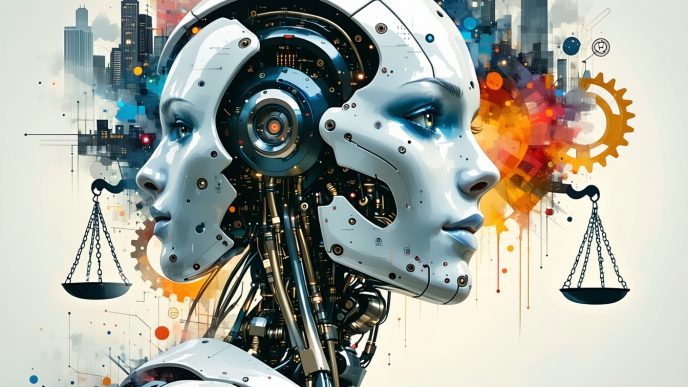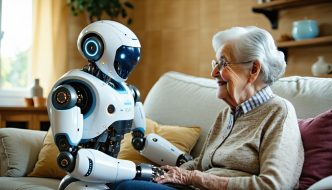The Potential of Humanoid Robots
Introduction to Humanoid Robots
Humanoid robots are designed to resemble and mimic human behavior, aiming to enhance interaction with people. They are equipped with features that allow them to perform tasks and communicate, making them stand out in the field of robotics. With advancements in technology, these robots are becoming increasingly capable of engaging socially, particularly in providing companionship.
The development of humanoid robots combines various fields, including artificial intelligence, machine learning, and robotics. Innovations in these areas allow humanoid robots to recognize emotions, respond to social cues, and interact with users in a manner that feels natural. As they become more integrated into everyday life, the potential for humanoid robots as companions is shifting from concept to reality.
Role of Humanoid Robots in Society
Humanoid robots serve multiple roles in society, ranging from personal companions to professional assistants. Their ability to interact with humans places them in various settings, including homes, hospitals, and workplaces. The trend of using humanoid robots for companionship highlights the growing recognition of loneliness as a significant social issue.
Humanoid robots can offer social support, especially to those who may be isolated or require assistance with daily tasks. They not only help bridge the gap in social interaction but also contribute positively to mental health. Below is a summary of the roles humanoid robots can play in society:
| Role | Description |
|---|---|
| Companionship | Providing emotional support and interaction. |
| Health Assistance | Assisting with daily tasks and monitoring health. |
| Education | Supporting learning activities and tutoring. |
| Security | Enhancing safety through surveillance and alert systems. |
| Entertainment | Engaging users in play and recreational activities. |
Humanoid robots, through their adaptive features, are becoming valuable members of our environment. Innovations such as Tesla Optimus Robot and sanctuary ai phoenix exemplify current advancements in this field, showcasing robots capable of learning and evolving to better serve human needs. As society continues to explore the capabilities of humanoid robots, their impact on companionship and social support remains a key area of interest.
Addressing Loneliness
Loneliness as a Social Issue
Loneliness has become a significant social concern in modern society. Many individuals, especially the elderly, face prolonged periods of solitude. Statistics reveal that loneliness can lead to negative mental and physical health outcomes. Studies indicate that over 30% of older adults report feeling lonely, a troubling figure that highlights the urgency of addressing this issue.
| Age Group | Percentage Experiencing Loneliness |
|---|---|
| 18-24 years | 29% |
| 25-34 years | 38% |
| 35-54 years | 35% |
| 55+ years | 43% |
The variations in reported loneliness across different age groups suggest a widespread challenge. As communities evolve, the need for social connections becomes increasingly essential. This is where humanoid robots for companionship can potentially play a critical role.
Can Humanoid Robots Provide Companionship?
Humanoid robots are designed to mirror human appearance and behaviors, making them suitable companions for individuals experiencing loneliness. They are equipped with artificial intelligence that enables them to engage in conversations, respond to emotions, and even learn user preferences over time. This aspect of humanoid robots enhances their ability to provide companionship.
Research shows that interactions with humanoid robots can help alleviate feelings of isolation. They offer consistent social interaction without judgment, which can be especially beneficial for those who struggle to maintain connections with other people.
Benefits of using humanoid robots for companionship include:
-
Consistent Presence: They can be available 24/7, ensuring that individuals have someone to interact with at any time.
-
Emotional Engagement: Humanoid robots can be programmed to recognize and respond to emotions, fostering a sense of emotional connection.
-
Physical Interaction: Advanced humanoid robots can simulate touch and even engage in physical activities, which can enhance the emotional experience for users.
Several projects and models, such as the Sanctuary AI Phoenix and the Ameca robot by Engineered Arts, are exploring these potentials in real-world settings. As technology continues to advance, humanoid robots may become a viable part of addressing loneliness, providing social support in ways that traditional methods may not.
Emotional Support
Humanoid robots have been designed to provide various forms of support, including emotional companionship. This section explores the emotional connection individuals can form with these robotic companions and how they are programmed to provide emotional support.
Emotional Connection with Robots
The emotional connection between humans and robots is gradually being recognized as a legitimate aspect of interactions with humanoid robots. Many individuals report feelings of companionship, trust, and attachment towards their robotic counterparts. The ability to engage with humanoid robots for companionship has become appealing, especially for those seeking social support.
Factors influencing emotional connections include:
- Appearance: The more human-like a robot appears, the easier it may be for someone to form an emotional bond with it. Robots like Ameca showcase realistic facial features that enhance emotional interactions.
- Communication: Voice interfaces in humanoid robots, such as those found in Xiaomi CyberOne, allow for engaging conversations, significantly contributing to the sense of connection.
- Personality Simulation: Robots programmed with distinct personalities can evoke stronger emotional responses. These personalities, when combined with effective mood recognition, enhance the experience of companionship as reflected in emotions and interactions.
| Factor | Influence on Connection |
|---|---|
| Appearance | Enhances relatability and bond |
| Communication | Facilitates engagement and dialogue |
| Personality | Creates a more personal experience |
How Robots Provide Emotional Support
Humanoid robots can provide emotional support through various mechanisms designed to address feelings of loneliness and isolation. Their capability to understand and respond to human emotions plays a vital role in this support system.
- Active Listening: Many humanoid robots are equipped with advanced programming that enables them to listen to users, providing a non-judgmental space for individuals to share their thoughts and feelings.
- Empathy Simulation: Robots can be programmed to recognize human emotions, such as sadness or happiness, allowing them to respond appropriately. For example, certain robots demonstrate empathy through comforting actions or words when a user expresses distress.
- Engagement Activities: Humanoid robots often facilitate games, conversations, or learning activities that can uplift a person’s mood and promote social interaction, thus minimizing feelings of loneliness.
| Support Mechanism | Description |
|---|---|
| Active Listening | Provides a safe space for sharing |
| Empathy Simulation | Recognizes and responds to emotions |
| Engagement Activities | Promotes interaction and reduces loneliness |
These features highlight how humanoid robots for companionship are not merely machines; they have the potential to become integral parts of social support systems. Their design and function can significantly alleviate feelings of isolation by fostering emotional connections. For further insights into these capabilities, refer to articles on robot emotions and ethics and emotion recognition in robots.
Social Interaction
Humanoid robots are becoming increasingly significant in facilitating social interactions. These advanced machines can mimic human behaviors, allowing for engaging exchanges and companionship. The design of humanoid robots aims to help people connect more effectively, especially for those dealing with loneliness.
Facilitating Social Interactions
Humanoid robots utilize various features, such as voice recognition and emotional recognition capabilities, to foster meaningful interactions. By engaging in natural conversations, these robots simulate genuine social contact, which can be especially beneficial for isolated individuals.
| Interaction Feature | Description |
|---|---|
| Voice Interfaces | Enable seamless communication with users, allowing robots to respond to questions and engage in dialogue. For more on this technology, refer to our article on voice interfaces in humanoid robots. |
| Emotion Recognition | Allows robots to gauge user emotions and react appropriately, enhancing the depth of interactions. For further details, see our discussion on emotion recognition in robots. |
As humanoid robots continue to evolve, they are equipped with more sophisticated technologies to help users feel connected and understood. Many robots are designed for specific contexts, like humanoid robots in elder care, ensuring that those who may be more vulnerable have access to companionship.
Benefits of Social Interaction with Robots
Interacting with humanoid robots offers several advantages for users. These benefits extend beyond simple companionship, addressing emotional and psychological needs.
| Benefit | Description |
|---|---|
| Reduced Loneliness | Robots can serve as constant companions, providing emotional support and social interaction, which may alleviate feelings of isolation. |
| Emotional Engagement | Users may find solace and understanding from robots programmed to respond to emotional cues, leading to a stronger emotional bond. |
| Safe Social Environment | Robots offer a low-pressure atmosphere for socializing, encouraging users to engage without fear of judgment. |
For those seeking companionship, humanoid robots can represent an innovative solution, blending technology with human interaction. This could revolutionize how society views loneliness and social support, especially among populations that require attentive companions. By exploring the various avenues through which humanoid robots engage users, it is clear that they have the potential to positively impact social dynamics and foster connections.
Ethical Considerations
As humanoid robots become more integrated into society, particularly as companions for companionship, various ethical considerations arise. Their presence poses questions related to the implications of their use and the privacy of individuals interacting with these machines.
Ethical Implications of Robot Companions
The introduction of humanoid robots as companions raises significant ethical questions. First, the emotional bond that individuals may form with these robots can affect human relationships. If people begin to rely on robots for social interaction, it may lead to a decline in genuine human connections. Prolonged reliance on robotic companionship could reshape societal norms and expectations regarding relationships.
To address these concerns, developers and researchers must carefully consider the design and functionality of robots. Users might develop attachments to robots that could lead to feelings of loneliness when those robots are not present. Creating emotional interactions that do not detract from real human companionship is a challenge.
Additionally, the responsibilities of manufacturers concerning the potential emotional manipulation of users come into question. Clear guidelines may be required to ensure that robots are designed ethically and that their purpose remains supportive, rather than detrimental, to human emotional well-being.
Privacy and Data Concerns
Humanoid robots that serve as companions often collect a variety of personal data from their users to function effectively. This can include speech patterns, preferences, and emotional responses. The collection of such sensitive information raises significant privacy issues. Users might feel uncomfortable with robots tracking their every interaction and feeling.
To address these privacy concerns, transparency regarding data collection and usage is essential. Users should be informed about what data is collected, how it is stored, and how it will be utilized. Additionally, companies should implement robust security measures to protect user data and prevent unauthorized access.
The table below outlines common privacy concerns related to humanoid robots:
| Privacy Concern | Description |
|---|---|
| Data Collection | Robots may gather vast amounts of personal data from users. |
| Data Storage | Duration and security of stored data impact user trust. |
| Data Sharing | Potential for sharing data with third parties raises concerns. |
| Consent | Ensuring informed consent should be a priority for developers. |
The development and deployment of humanoid robots as companions necessitate a careful balance between providing support and addressing ethical concerns. Discussions surrounding the implications of robotic companionship will continue as technology advances, making it crucial for stakeholders to evaluate their impact on society. For further insights into the role of humanoid robots in social contexts, see our article on humanoid robots in elder care.
Current Developments
Latest Innovations in Humanoid Robots
The field of humanoid robotics has seen remarkable advancements in recent years. These innovations focus on improving the capabilities of robots, making them more effective companions. Here are some of the latest innovations that have emerged:
| Innovation | Description |
|---|---|
| AI Integration | Enhancement of emotional recognition capabilities, enabling robots to respond to human emotions. For more on AI’s role in humanoid robots, visit AI models in humanoid robots. |
| Advanced Sensors | Development of sophisticated sensors that enhance interaction, allowing robots to perceive their environment better. Learn more about this in our section on humanoid robot sensors. |
| Improved Locomotion | Biomechanical designs that allow robots to move more fluidly and naturally. Details can be found at humanoid robot locomotion systems. |
| Voice Interfaces | Progress in voice recognition enhances communication, making interactions feel more personal. For more information, see voice interfaces in humanoid robots. |
Applications in Real-World Scenarios
Humanoid robots are increasingly being utilized across various sectors to provide companionship and support. Their applications range from healthcare to home environments. Here are some notable examples:
| Sector | Application Description |
|---|---|
| Elder Care | Robots are implemented to provide companionship and support for daily activities, contributing to emotional well-being. Explore more in humanoid robots in elder care. |
| Education | Humanoid robots act as tutors or assistants in classrooms, engaging students and enhancing learning experiences. More details can be found in humanoid robots for education. |
| Healthcare | Robots assist medical professionals by providing administrative support and friendly interactions with patients. Insights are available in humanoid robots in healthcare. |
| Home Assistance | These robots help with household chores, promoting a stress-free living environment. Discover more in humanoid robots for daily chores. |
The ongoing innovations and real-world applications highlight the promise of humanoid robots for companionship. As technology continues to evolve, so too will the potential benefits they bring to society. For a deeper dive into humanoid robots for companionship, see the full discussion on humanoid robots for companionship.
Future Prospects
As advancements in technology continue, the future of humanoid robots appears promising, especially in the context of providing companionship. Innovations in design, artificial intelligence, and emotional intelligence are likely to shape how humanoid robots interact and support individuals facing loneliness.
The Future of Humanoid Robots
The trajectory of humanoid robots for companionship suggests an increase in their presence in homes and communities. Future models are expected to feature enhanced emotional recognition capabilities, allowing them to understand and respond to human emotions better. This will facilitate deeper connections, making them more effective companions.
Here are some potential developments:
| Feature | Description |
|---|---|
| Emotional Recognition | Ability to detect and respond to human emotions through facial expressions and voice tone. |
| Enhanced Interactivity | Improved conversational abilities using advanced natural language processing, making interactions more engaging. |
| Customizable Personalities | Options for users to select or modify robot personalities, tailoring interactions to individual preferences. |
| Mobility Improvements | Advanced locomotion systems allowing robots to navigate various environments with ease. |
Innovations such as voice interfaces in humanoid robots and emotion recognition in robots will likely enhance the quality of interaction.
Challenges and Opportunities Ahead
Despite the potential benefits, several challenges remain. Ethical considerations regarding autonomy, privacy, and emotional attachment will need careful examination. There is a balance to be struck between fostering companionship and addressing concerns related to data security and human dependency.
| Challenge | Consideration |
|---|---|
| Ethical Implications | Issues related to the emotional bonds formed with robots and the consequences of such attachments. |
| Privacy Concerns | Risks associated with data collection by humanoid robots and how this information is used. |
| Accessibility | Ensuring that humanoid robots for companionship are affordable and accessible to diverse populations. |
Opportunities also exist in various sectors such as healthcare and elder care. Humanoid robots can assist in social settings, offering companionship and promoting well-being. Their introduction into environments that require frequent social interaction can lead to real improvements in quality of life. For applications in healthcare, see our article on humanoid robots in healthcare.
As humanoid robots continue to evolve, they hold the potential to be significant allies in combating loneliness and providing social support, demonstrating their capability to integrate into everyday life while addressing pressing social issues.

